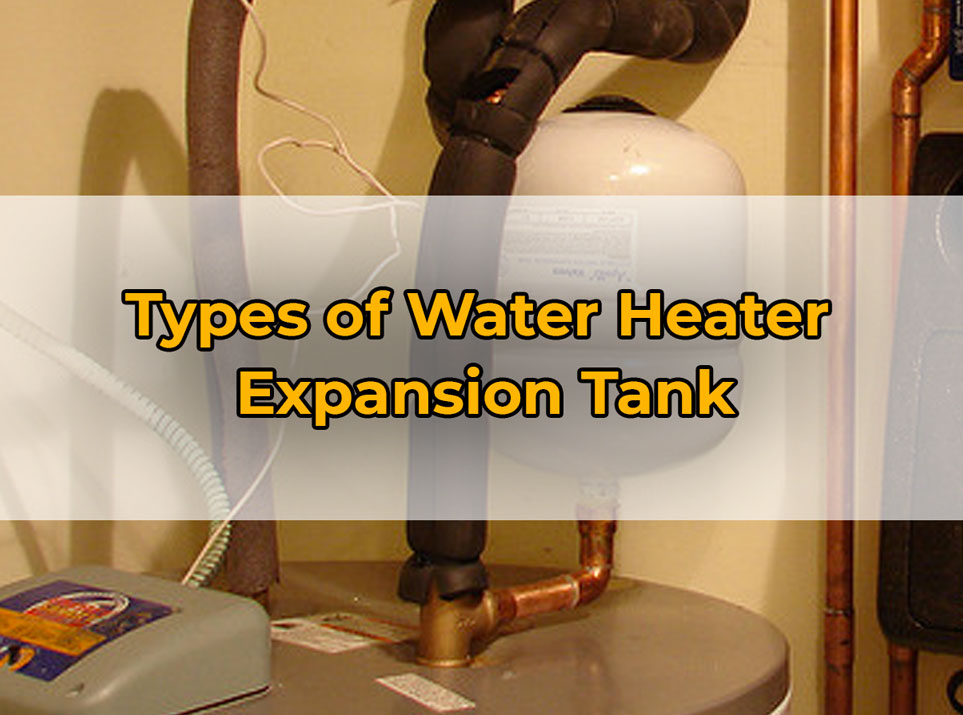Water heater expansion tanks are essential for plumbing systems. They reduce risk of damage from high pressure, like leaks and explosions. Plus, they increase the lifespan of water heaters and make them more energy efficient.
Expansion tanks come in all sorts of shapes and sizes. Steel, copper, and composite materials are all common. Remember, professional installation is key!
Believe it or not, ancient civilizations may have used expansion tanks too. They used gravity-fed systems and pipes made of pottery or clay to heat water for bathing and cooking. Pretty incredible!
Purpose of Water Heater Expansion Tank

Water Heater Expansion Tank: What It Does and Why You Need It
A water heater expansion tank alleviates the pressure on your water heater, due to thermal expansion. This occurs when hot water is produced and the pressure in the tank increases as a result. The expansion tank creates a space for the excess water and pressure to go, preventing potential damage to the tank and plumbing system.
The expansion tank contains a diaphragm that separates the air and water in the tank, creating a cushion for the water to expand into. This helps regulate the pressure and temperature within the tank, ensuring it operates efficiently and safely.
It’s important to note that the size of the expansion tank should be matched to the size of your water heater and the water pressure in your home. A professional plumber can assist in determining the correct size.
Thermal expansion: when your water heater turns into a temporary hot air balloon.
Explanation of Thermal Expansion
When water is heated, it expands in the closed water heater tank. This causes pressure to exceed the maximum limit. So, the safety valve opens to release the pressure and avoid an explosion. Expansion tanks are then installed to absorb the excess water, while keeping the pressure constant.
They have a diaphragm that separates compressed air from the water. This acts as a safety device, allowing for thermal expansion and preventing damage to pipes, valves and fixtures. It also eliminates pressure fluctuations and eliminates noise caused by hammering pipes. Plus, it reduces energy lost due to heat loss.
In 1952, Fredrick M. Ayer Jr. revolutionized the design of expansion tanks. He used butyl rubber diaphragms for better performance in higher temperatures. Now, newer models have reinforced epoxy resin to make them more durable and corrosion-resistant.
Expansion tanks are like a therapist for your water heater, helping it manage the thermal expansion stress.
Importance of Water Heater Expansion Tank to Manage Thermal Expansion
Utilizing a Water Heater Expansion Tank is vital for managing the thermal expansion of the water heater. Without one, costly damage can occur to plumbing, fixtures, and appliances. An Expansion Tank serves as a buffer, allowing pressure variations due to temperature changes.
Benefits include:
- Extending the life of your water heater.
- Safety hazard prevention.
- Maintaining optimal pressure.
- Reducing noise from plumbing system expansion.
- Meeting local building codes and manufacturer’s warranty requirements.
Pro Tip: Select the correct size Expansion Tank for your setup’s needs. Not doing so can result in insufficient protection against thermally induced pressure changes. Get the most out of your water heater expansion tank by exploring all the available options!
Types of Water Heater Expansion Tank

An expansion tank is necessary for your water heater to regulate the pressure of heated water. This article covers different types of expansion tanks available in the market.
1. Diaphragm Type Expansion Tank
This Expansion Tank uses diaphragm technology and is used in water heater systems to regulate pressure and avoid damage from thermal expansion.
A Diaphragm Type Expansion Tank has a flexible diaphragm that splits the interior of the tank into two chambers. One is filled with compressed air, and the other with water. As the heated water expands, it is stored in the chamber with compressed air and flexes the diaphragm. This helps keep water pressure steady and lengthens the life of the heating system.
See the table for key features:
| Feature | Description |
|---|---|
| Material | Stainless Steel/ Rubber |
| Capacity | 2 – 119 gallons |
| Pressure rating | 150 psi max working pressure |
| Shape | Horizontal/Vertical |
It’s important to maintain these tanks regularly. Otherwise, problems like pressure loss, rust or corrosion, or leakage can happen.
Pro Tip: It’s best to install Diaphragm Type Expansion Tanks in an accessible place and buy from trusted makers for long-term use. Bladder type expansion tanks: keeping your water heater from exploding, one elastic sac at a time!
2. Bladder Type Expansion Tank
Bladder Expansion Tanks are designed to keep water pressure in your heating system safe from temperature fluctuations. It has an air-filled rubber bladder that separates water from air inside the tank. As the water expands, it compresses the bladder, increasing its volume.
Here’s some info about Bladder Type Expansion Tanks:
| Property | Value |
|---|---|
| Pressure Rating | 125 PSI |
| Temperature Rating | -10°F to 210°F |
| Material | Carbon Steel / Stainless Steel |
| Size Range | 2 gallons – 455 gallons |
Bladder Expansion Tanks have a major advantage – they can be installed in any orientation. And they’re great for closed-loop systems, where air won’t mix with water.
These tanks have become quite popular recently. According to a report by Transparency Market Research, their demand is growing due to advancements in construction and home improvement industries. So, if you want your water heater to perform better, get a Bladder Type Expansion Tank!
3. Piston Type Expansion Tank
This type of water heater expansion tank features a movable piston design, separating water from air to counter the thermal expansion. This layout offers better energy performance and delivers effective solutions without stressing the piping systems.
We present details about the piston type expansion tank in the table below. It includes material, dimensions, and pressure range uses. Available sizes range from 2-6 gallons.
| Column 1 | Column 2 | Column 3 |
|---|---|---|
| Material Type: | Steel or Copper | |
| Volume: | 2-6 gallons | |
| Operating Temperature Range: | -40°F – up to 200°F | |
| Pressure Range: | Up to 150 PSI |
This type of design supplies ample capacity under high-pressure compared to bladder-based designs. It also has impressive corrosion resistance, longer life spans, and is easier to repair.
Experts like Plumbing Perspective have given it rave reviews, noting its proficiency during installation and use over time. According to them, “Piston Type Expansion Tanks can be used in closed loop hot water heating systems almost anywhere potential damage may occur due to thermal expansion.”
It’s wise to install a water heater expansion tank – it may not be necessary, but it’s always better to stay safe!
How to Install Water Heater Expansion Tank

Installing a water heater expansion tank is a crucial part of ensuring that your plumbing system functions effectively and efficiently. Here is a step-by-step guide on how to install it:
It is important to note that expansion tanks come in different sizes and types, so it is recommended to consult with a professional plumber before purchasing one.
Additionally, some jurisdictions require permits or inspections for water heater expansion tank installations, so it is essential to check with your local building department.
1. Installation of Expansion Tank for Existing Water Heater
Expansion Tank Installation Guide for Your Water Heating Unit
Prevent your water heater from blowing up by adding an expansion tank. Here’s a brief guide on how to install one.
- Turn off water and power supply of the water heater.
- Choose the best spot for the expansion tank- preferably above the water heater.
- Cut the pipe in the chosen location.
- Put the expansion tank in place with the right hardware. Connect a tee on top, and join the tee back together.
- Open all hot water faucets in the house. Fill with cold water. Test for leaks. Then close them.
This guide may not work for every water heater or plumbing setup. If you’re not sure, get help from a professional plumber.
Additional Tips:
- Be sure the expansion tank is the right size. Incorrect installation can reduce efficiency without benefits.
- Inspect pipes and valves before installation. Faulty components can lead to disastrous failures.
Adding an expansion tank to your water heater is like giving it a bit more space. We all need our own space- even our things!
2. Installation of Expansion Tank for New Water Heater
Expansion Tank Installation for New Water Heater: A Guide
Installing an expansion tank for a new water heater is essential. It regulates pressure in the plumbing system, decreases the risk of leaks, and prolongs the life of your water heater.
Here is a 6-step guide to installing an expansion tank:
- Turn off cold water supply valve.
- Drain water from the tank with a drain valve.
- Identify hot and cold water lines. Locate where to install the expansion tank on the cold line.
- Attach the compression tee to the cold water supply with Teflon tape. Attach the other end of the tee to the expansion tank.
- Tighten all connections firmly. Turn on hot and cold valves. Open a faucet to allow trapped air to escape.
Installation process may vary depending on the water heater model. Check product information before starting.
Inspect the expansion tank periodically. Poor fit or weak connections might not be noticed initially.
Gather materials such as pipe fittings, tape measure, PTFE (Teflon) tape, screwdrivers. Consult professional plumbers if uncertain.
Following these guidelines will help maintain efficient plumbing operation and extend its longevity. Neglecting the expansion tank leads to a messy and expensive breakup.
Maintaining Water Heater Expansion Tank
To ensure the optimal functioning and longevity of the water heating system, it is crucial to maintain the pressure balance within the system.
Here are three simple steps to effectively maintain the water heater expansion tank:
One crucial aspect to maintain the water heater expansion tank is to perform regular inspection and upkeep since the expansion tank’s malfunctioning can lead to severe issues, such as hot water heater leaking and equipment failure. Regular maintenance can improve the tank’s efficiency and prolong its lifespan.
1. Regular Inspection of Expansion Tank
Inspecting Expansion Tanks frequently ensures that any flaws are fixed before they cause a problem. Check for leaks, corrosion or damage in the valve and ensure its pressure is within limits. This keeps the system functioning correctly.
If you have no plumbing experience, it’s best to get professional help. They can check and maintain regularly, fixing minor strains that may become major problems with time. This helps optimize water flow and prevents leakage from pipes, saving energy bills.
Please read your owner’s manual for detailed directions on inspecting your specific expansion tanks or get assistance from a plumbing professional, as their expertise is vital in preserving plumbing systems.
Often, people ignore faulty Expansion Tanks due to ignorance of its significance or choose to overlook its defects momentarily due to other expenses. It is important to understand that Repair costs are cheaper than replacing an entirely damaged unit.
In conclusion, overlooking Expansion Tank examinations leads to more significant problems later on while timely maintenance guarantees durable systems and lessens possible extra expenses. Good news, flushing out sediment from your expansion tank is easier than unclogging your shower drain.
2. Flushing Out Sediment from Expansion Tank
Maintaining your water heater’s expansion tank is vital. Sediment build-up can reduce performance and cause damage. To flush out sediment:
- Turn off power to the heater.
- Close the cold-water supply valve.
- Attach a hose to the drain valve at the bottom of the tank. Direct it outside or into a bucket.
- Open both the drain valve and temperature-pressure relief valve.
- Let the water drain until it runs clear without sediment or debris.
- Close the valves, refill with water and turn on power.
Check and flush out sediment regularly. Not doing so leads to leaks and not enough hot water. If you’re having issues, try turning it off and on again – it just might work!
Troubleshooting Water Heater Expansion Tank
Solutions for Issues with Water Heater Tanks
If you are experiencing complications with your water heater tank expansion, you must take some measures to address it. Here are some professional troubleshooting solutions that you can apply.
1. Identifying Common Issues with Expansion Tank
The Expansion Tank of Water Heater: Troubleshooting Common Issues
An expansion tank is an important part of the plumbing system in your home. It helps manage pressure effectively and increase water pressure in shower. However, sometimes it can have problems that need to be fixed. Here are some common issues and solutions.
Common Issues with Expansion Tank:
| Issue | Symptoms | Solution |
|---|---|---|
| Leakage | Water dripping or pooling | Check for any loose connections or fittings. Change the pop-off valve if needed. |
| Excessive pressure | High-pitched noises coming from pipes or water heater | Make sure the air cushion in the expansion tank is working. Check inflation levels and replace if needed. |
| Malfunctioning Diaphragm | Low water pressure or inconsistent hot water supply | Replace the diaphragm or the entire tank. |
You may need to get a plumber if these solutions don’t work.
It is important to notice issues with the expansion tank to stop any damage, like water damage or injury risk.
2. Solutions to Fix Issues with Expansion Tank
Expanding Your Knowledge on Fixing Expansion Tank Issues? Let’s Heat Up the Fix!
Turn off the power and water flow to your heater. Disconnect the tank and check air pressure with a tire gauge. Adjust the pressure to match the recommended psi level found on the tank. If adjusting the pressure doesn’t work, try draining water until the tank is half full. Check also how to fix hot water pressure low but cold fine.
Reconnect everything and turn on the water and power. Monitor your expansion tank for further issues. Inspect it at least once a year for leaks or damage. Not all tanks are equal, so educate yourself before attempting repair.
One homeowner had rattling noises or water heater sounds like a tea kettle when using hot water. Too much pressure caused vibrations. After adjusting the pressure, the problem was solved. Now let’s heat up the fix and tackle those leaks!
Conclusion on Water Heater Expansion Tank
An analysis of water heater expansion tanks reveals their importance in optimal hot water system performance. These tanks reduce thermal expansion effects, preventing overpressure and extending the lifespan of heaters. Also, they minimize plumbing repairs and service calls caused by machinery breakdowns and leaks, making them a must-have part of any heating system.
The size of an expansion tank needs to be appropriate for the water supply system. Incorrect sizing may cause severe damage, thus defeating its purpose. Homeowners or plumbers can use sizing charts from manufacturers or calculate the volume needed according to industry standards for correct selection.
To maintain system efficiency, all components must be regularly checked. Valves, thermostats, and pressure relief mechanisms should be inspected for malfunctions that may reduce performance or cause damage. Leaks from faulty parts can increase pressure and damage appliances like pipes and faucets, leading to costly repairs. Therefore, proper maintenance is important for optimal performance and long lifespan.
In conclusion, water heater expansion tanks are essential for homes that have not adopted recirculating technology. Thermal expansion causes excessive wear and tear, leading to equipment failure. Adding these protection devices keeps the system running smoothly and prevents plumbing disasters from occurring.
Does an expansion tank make a water heater last longer?
The answer is yes, it does.
One of the main reasons why an expansion tank can help extend the life of your water heater is by reducing stress on the unit’s components.
When hot water flows into your home’s plumbing system, it creates pressure that pushes against the walls of your pipes and fixtures. Without an expansion tank, this pressure can cause damage to valves, faucets, and even the water heater itself over time.
Additionally, when a water heater operates without an expansion tank installed, it may experience what’s known as thermal expansion. Thermal expansion occurs when heated water expands in volume and causes additional pressure inside the unit.
What happens if expansion tank is full of water?
When an expansion tank is full of water, it loses its ability to absorb excess pressure within the system. This means that as hot water expands, it has nowhere to go and can create dangerous levels of pressure within the pipes and valves. In severe cases, this increased pressure can cause pipes to burst or valves to fail, leading to costly repairs and potential safety hazards.
Moreover, a full expansion tank can also cause other issues such as reduced efficiency and increased energy bills.
Can I empty my expansion tank?
The short answer is yes, you can empty your expansion tank. But before you do, it’s important to understand how it works and why it’s there in the first place. An expansion tank works by absorbing excess pressure caused by thermal expansion in the heating or cooling system. If this pressure is not relieved, it can cause damage to pipes, valves, and other components.
To empty your expansion tank safely, you will need to follow some simple steps. First, turn off the power supply and close all valves leading into the system. Then locate the valve on top of the expansion tank and open it slowly until all water has drained out.
“There is no real ending. It’s just the place where you stop the story.”






